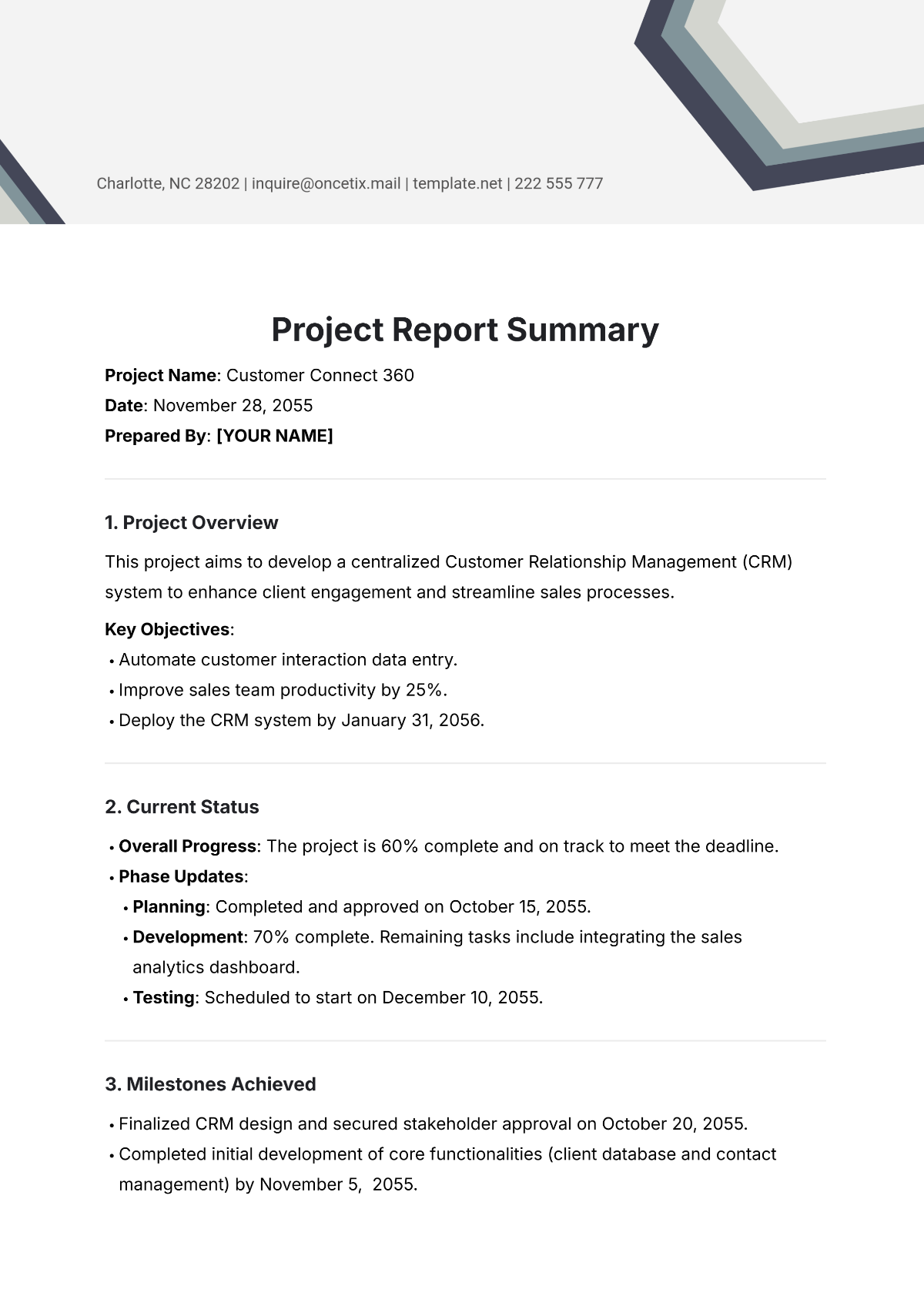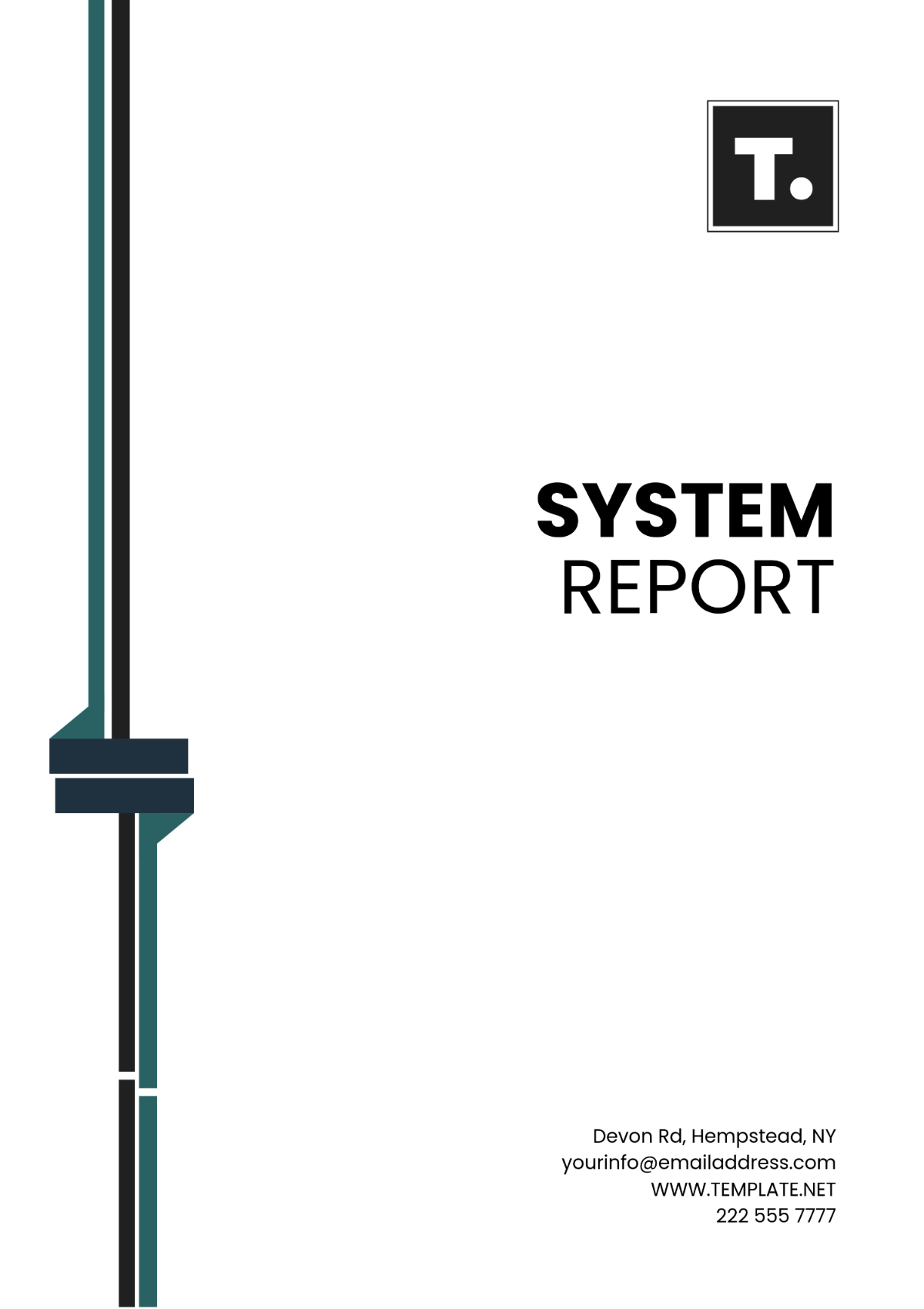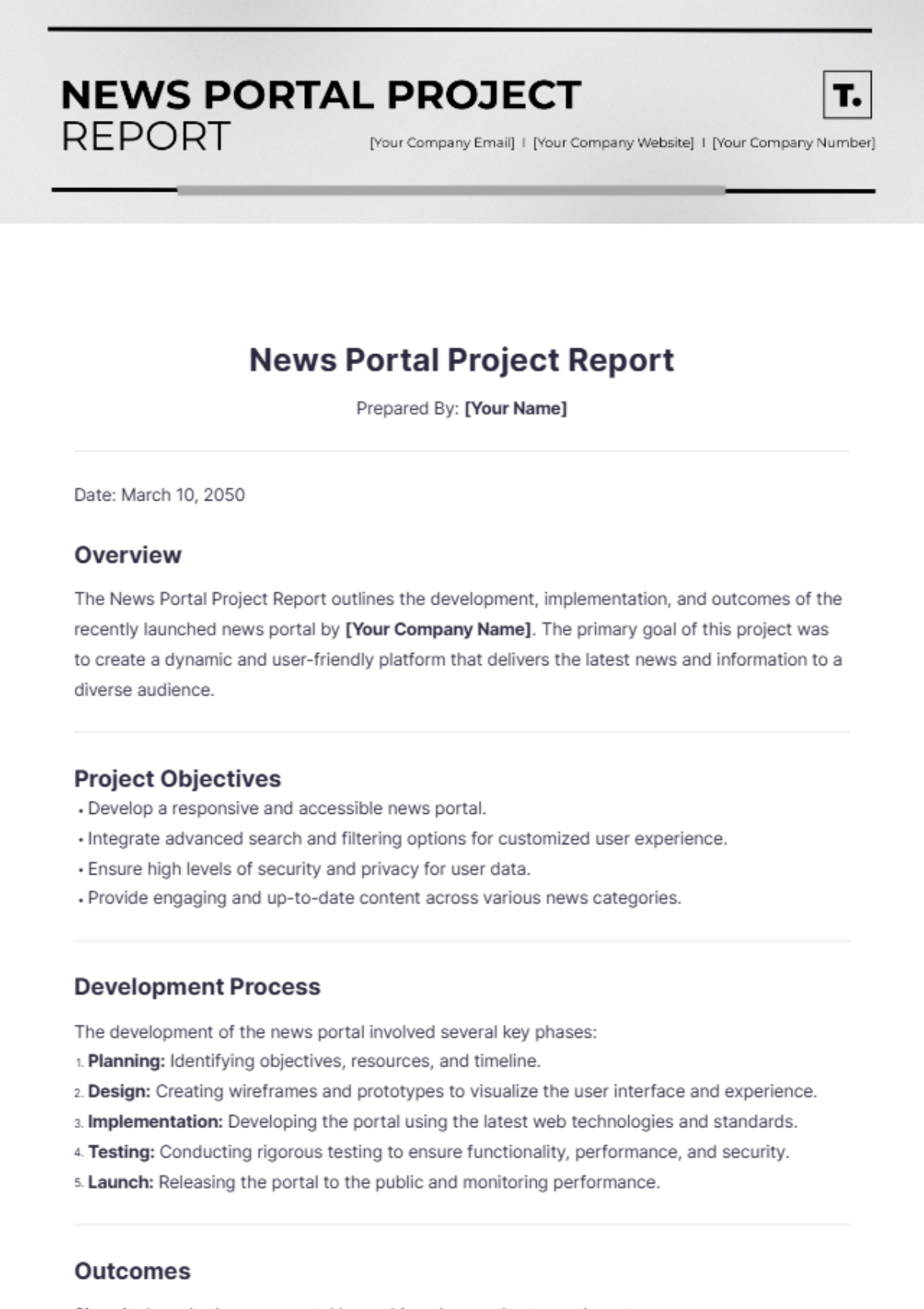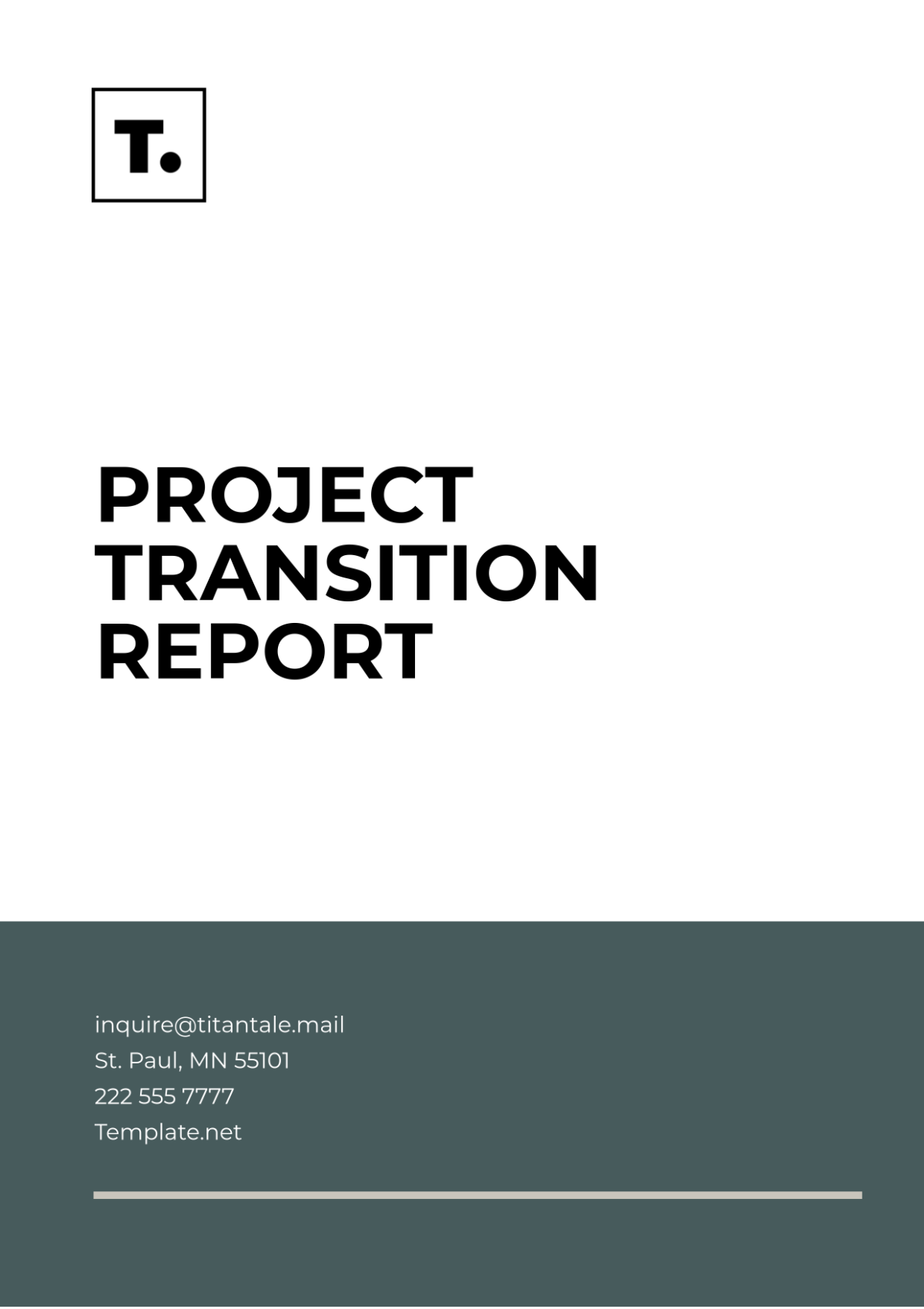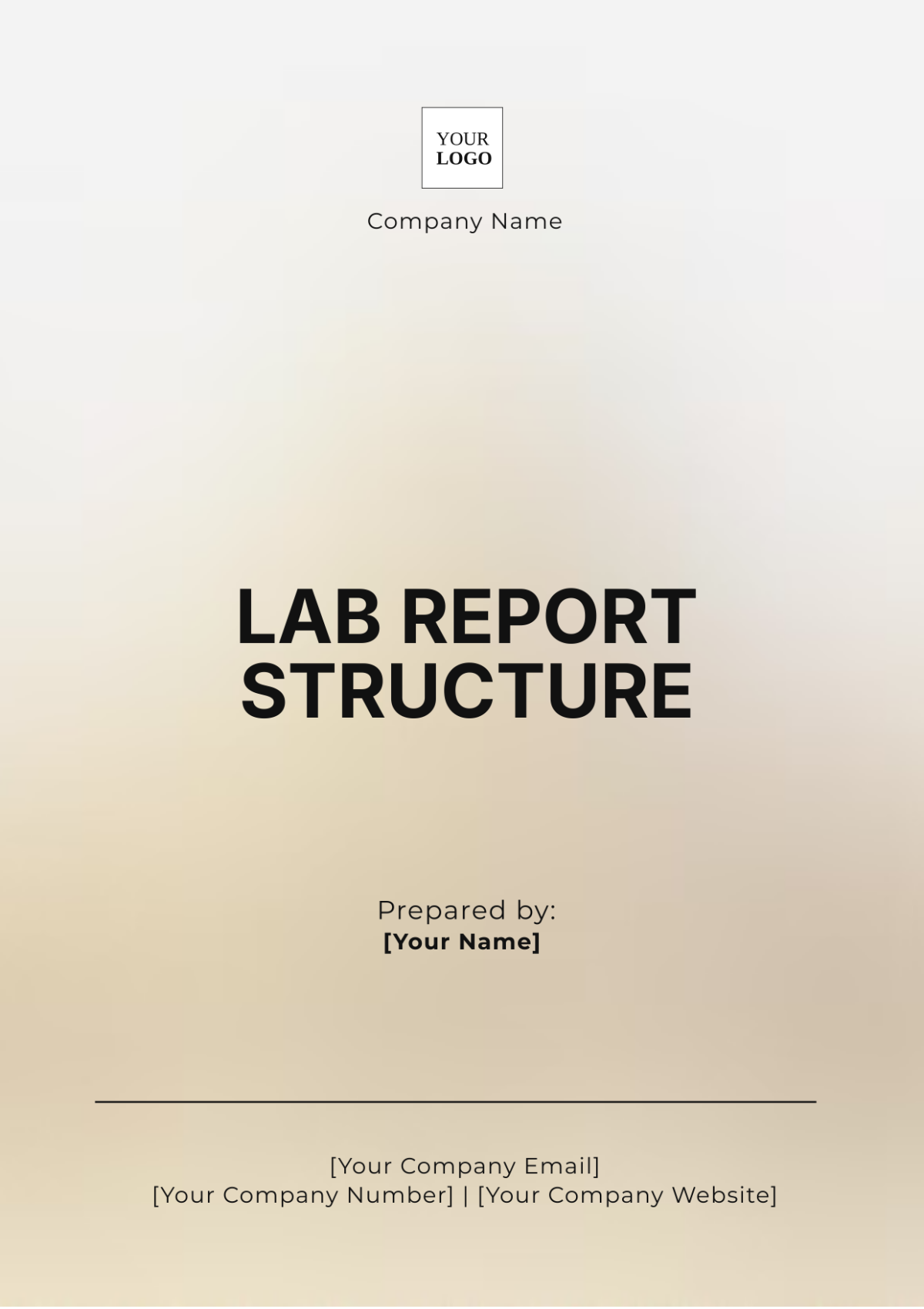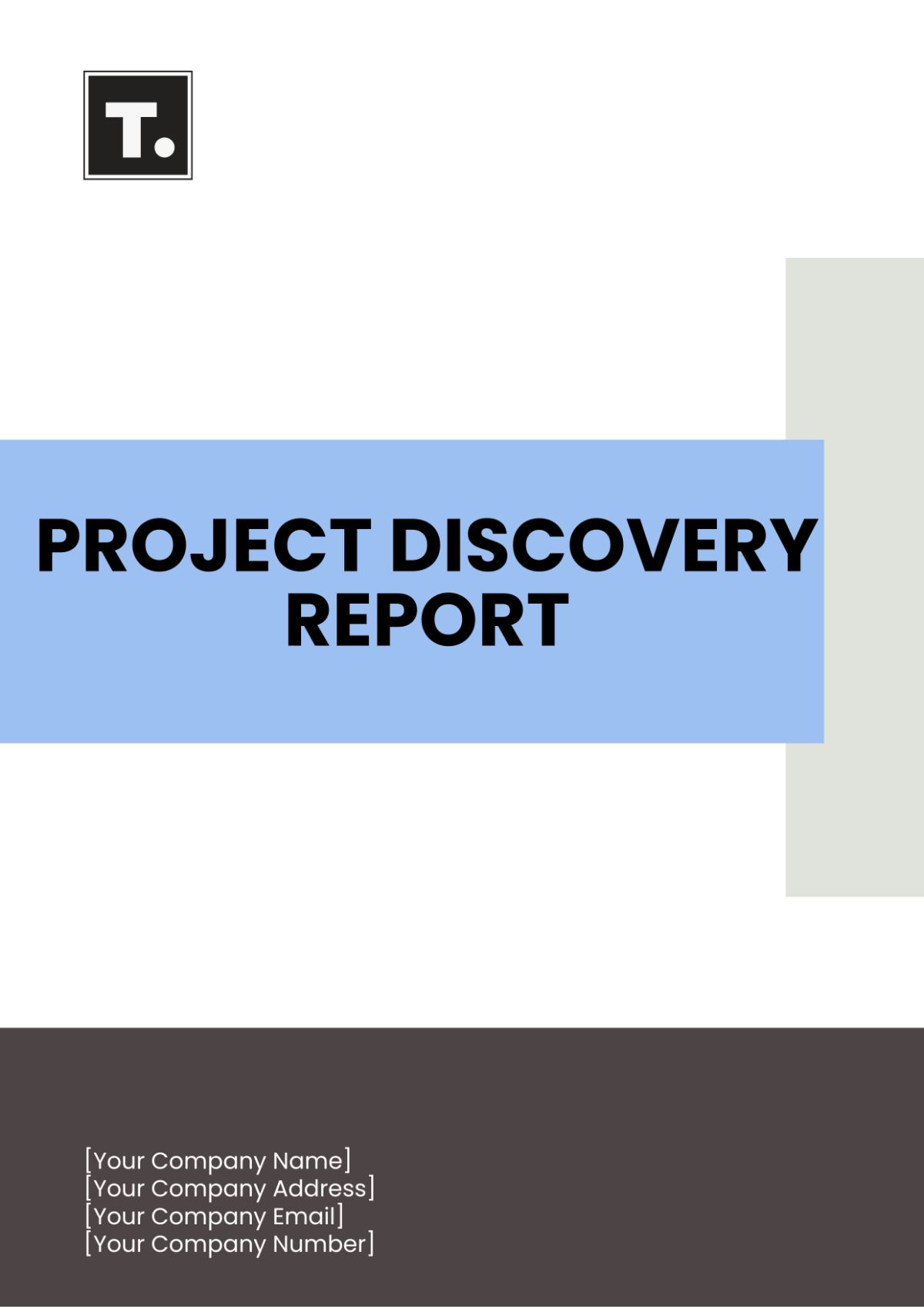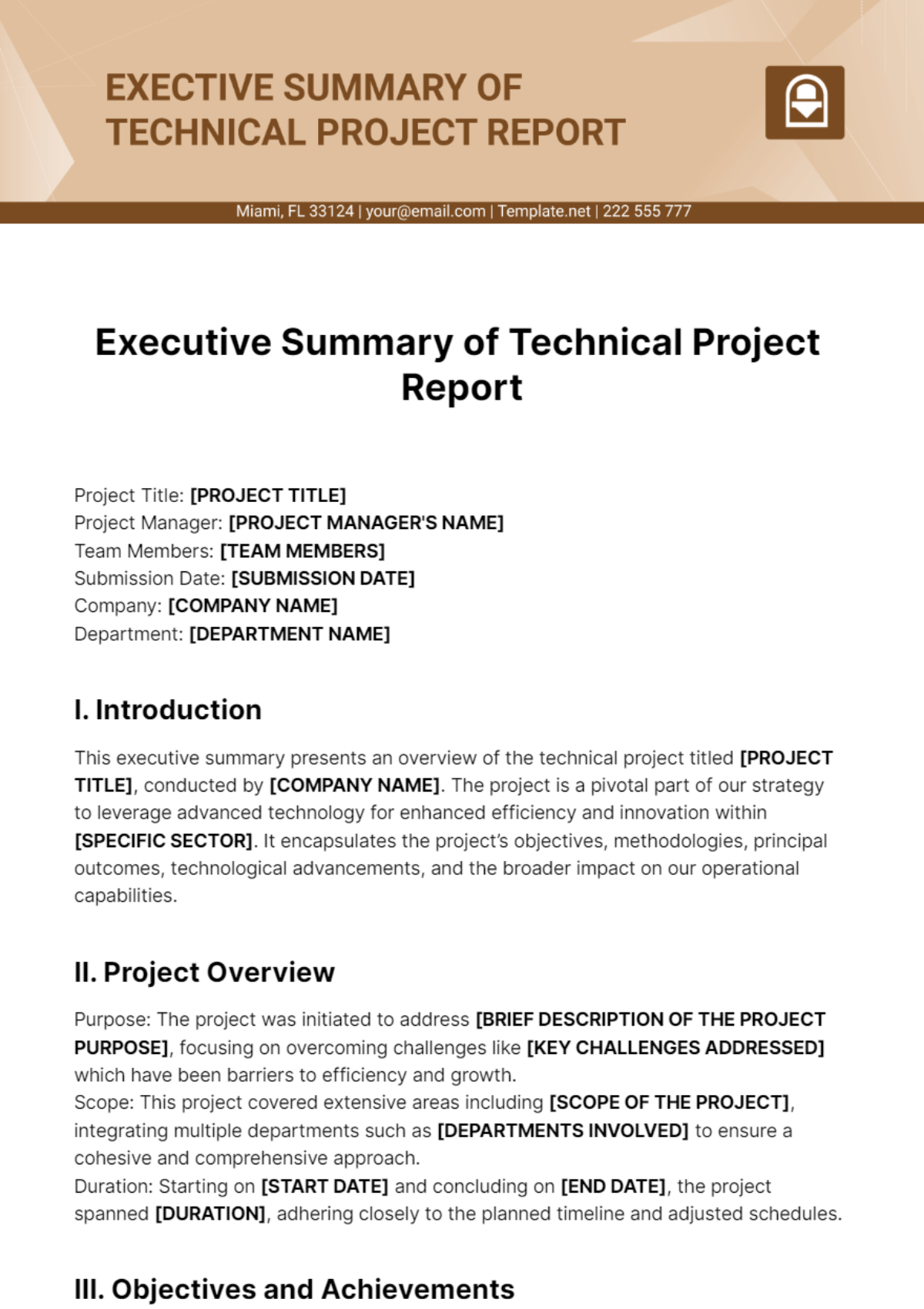Project Review Report
Date: January 5, 2050
Prepared By: [Your Name]
Company Name: [Your Company Name]
Company Address: [Your Company Address]
I. Executive Summary
The executive summary succinctly encapsulates the outcomes of the post-project evaluation. It highlights that the project, [Your Company Name]'s Digital Transformation Initiative," aimed to streamline internal processes and enhance customer engagement. The evaluation indicates that while significant progress was made, certain challenges were encountered. Specifically, the initiative aimed to improve response times, increase online sales, and modernize customer service channels.
II. Project Background
The [Your Company Name]'s Digital Transformation Initiative was launched in response to market demands for enhanced digital services and increased operational efficiency. Spanning 18 months, the project involved cross-functional teams from IT, marketing, and operations. Notable milestones include the development of a new CRM system and the launch of a customer portal. The project was initiated in response to market research indicating a need for improved digital interfaces and a desire to capitalize on emerging technologies.
III. Review Objectives and Scope
The objectives of the post-project evaluation were to assess the project's adherence to timelines, budget, and quality standards, as well as to evaluate its impact on customer satisfaction and internal efficiencies.
The scope included a comprehensive review of project documentation, stakeholder interviews, and performance metrics analysis. Furthermore, the evaluation aimed to identify areas where the project excelled and areas where improvements could be made for future initiatives.
IV. Methodology
The evaluation employed a mixed-methods approach, combining quantitative data analysis with qualitative insights gathered through interviews and surveys.
Performance metrics such as ROI, customer satisfaction scores, and project milestones were analyzed using statistical techniques and benchmarking against industry standards.
Additionally, sentiment analysis was conducted on customer feedback to gauge satisfaction levels accurately.
V. Performance Analysis
The analysis revealed that the project achieved a 20% reduction in customer service response times and a 15% increase in online sales. However, cost overruns of 10% were observed due to unforeseen technical challenges during implementation. Despite these setbacks, overall project quality remained high, with 90% of deliverables meeting or exceeding expectations. Additionally, user engagement metrics, such as website traffic and portal usage, showed significant improvements post-implementation.
VI. Key Findings
Key findings indicate that while the project successfully delivered on its primary objectives of improving customer engagement and operational efficiency, there were areas where performance fell short.
These include budget overruns, integration challenges with legacy systems, and delays in user adoption of new technologies. Moreover, stakeholder feedback highlighted the need for more robust training programs to facilitate smoother transitions to the new systems.
VII. Lessons Learned
Lessons learned from the project include the importance of thorough risk assessment and contingency planning, proactive communication with stakeholders, and the need for ongoing training and support to facilitate user adoption of new technologies. Additionally, the project underscored the importance of stakeholder engagement throughout all phases of the project lifecycle to ensure alignment with business objectives and expectations.
VIII. Recommendations
Based on the evaluation findings, recommendations for future projects include implementing a more robust change management process, conducting thorough technical feasibility studies before project initiation, and establishing clear accountability for project cost management.
Additionally, investing in ongoing training and support programs to ensure user adoption and mitigate resistance to change is essential for the success of similar initiatives in the future.
IX. Conclusion
In conclusion, while [Your Company Name]'s Digital Transformation Initiative achieved significant milestones and improvements, there are valuable lessons to be learned from its challenges. By incorporating the recommendations outlined in this report, future projects can better navigate similar complexities and achieve even greater success. Moreover, leveraging the insights gained from this evaluation will enable [Your Company Name] to remain competitive in an ever-evolving digital landscape.

